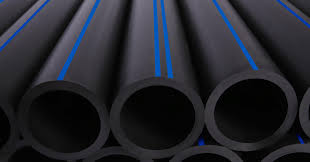Dec . 20, 2024 10:50 Back to list
HDPE Pipes for Efficient Water Supply Systems and Applications
HDPE Water Supply Pipe Products An Overview
High-Density Polyethylene (HDPE) is a thermoplastic polymer characterized by its high strength-to-density ratio. When it comes to water supply systems, HDPE has become an increasingly popular material due to its numerous advantages over traditional piping materials such as PVC, concrete, or metal. In this article, we will explore the properties, benefits, applications, and installation aspects of HDPE water supply pipes, which are vital for modern infrastructure.
Properties of HDPE
HDPE pipes are known for their excellent physical and chemical properties. They are lightweight yet incredibly strong, making them easy to handle and install. One of the key features of HDPE is its high resistance to corrosion and chemical leach, which enables it to transport potable water without the risk of contamination. Additionally, HDPE pipes have smooth inner walls that reduce friction, improving flow rates and enhancing the efficiency of water delivery systems.
HDPE is also known for its flexibility, allowing for installation in a variety of terrains and conditions. This flexibility helps in reducing the number of joints required in installation, minimizing potential leak points. The material can withstand extreme temperatures and is resistant to environmental stresses, which makes it ideal for both above-ground and underground applications.
Benefits of Using HDPE for Water Supply Systems
1. Durability HDPE pipes have a long lifespan, often exceeding 50 years with proper installation and maintenance. They resist cracking, impact, and abrasion, making them suitable for various soil conditions and climates.
2. Cost-Effectiveness Although the initial cost of HDPE pipes may be higher than traditional materials, the overall lifecycle costs are lower due to reduced maintenance, longer service life, and ease of installation. Less excavation work typically results in lower labor costs, too.
3. Environmental Sustainability HDPE is recyclable, making it a sustainable choice for water supply systems. The production of HDPE pipes also involves a smaller carbon footprint compared to metals or other plastic alternatives.
4. Leak-Free Joints HDPE pipes can be joined using heat fusion methods, which create a homogeneous, leak-free joint that maximizes the integrity of the water supply system. This method significantly reduces the potential for leaks and unscheduled maintenance.
5. Resistance to Biofilm Formation The smooth interior surface of HDPE pipes helps to reduce biofilm growth, an essential feature for maintaining the quality of drinking water.
hdpe water supply pipe products

Applications of HDPE Water Supply Pipes
HDPE water supply pipes are versatile and can be used in a variety of applications, including
- Municipal Water Supply Many cities use HDPE pipes in their water distribution networks due to their durability and resistance to corrosion, which ensures clean, potable water delivery.
- Irrigation Systems Agricultural applications benefit from HDPE's resistance to chemicals and flexibility, allowing for effective irrigation while reducing water loss.
- Industrial Water Systems Industries often use HDPE pipes for transporting process water, wastewater, and other fluids as they can handle various contaminants without degrading.
- Firewater Supply HDPE pipes are increasingly used in fire protection systems for their reliability and ability to deliver water at the necessary pressures.
Installation Considerations
Installation techniques for HDPE pipes can vary based on the required application and site conditions. HDPE can be installed using trenching, directional drilling, or open-cut methods. Proper training and adherence to industry standards are crucial to ensure joint integrity and overall system performance.
One of the significant advantages of HDPE installation is the reduced need for heavy machinery, resulting in minimal environmental disturbance. Furthermore, the low weight of the pipes makes them easier to transport and handle on-site, which can speed up project timelines.
Conclusion
In summary, HDPE water supply pipe products offer a reliable, cost-effective, and eco-friendly solution for modern water distribution systems. Their durability, resistance to corrosion, and low maintenance requirements make them an excellent choice for municipalities, industries, and agricultural applications alike. As water supply challenges continue to grow worldwide, the adoption of HDPE piping will likely play an essential role in ensuring efficient, sustainable water delivery systems for the future.
-
High-Quality PVC Borehole Pipes Durable & Versatile Pipe Solutions
NewsJul.08,2025
-
High-Quality PVC Perforated Pipes for Efficient Drainage Leading Manufacturers & Factories
NewsJul.08,2025
-
High-Quality PVC Borehole Pipes Durable Pipe Solutions by Leading Manufacturer
NewsJul.08,2025
-
High-Quality PVC Borehole Pipes Reliable PVC Pipe Manufacturer Solutions
NewsJul.07,2025
-
High-Quality UPVC Drain Pipes Durable HDPE & Drain Pipe Solutions
NewsJul.07,2025
-
High-Quality Conduit Pipes & HDPE Conduit Fittings Manufacturer Reliable Factory Supply
NewsJul.06,2025

